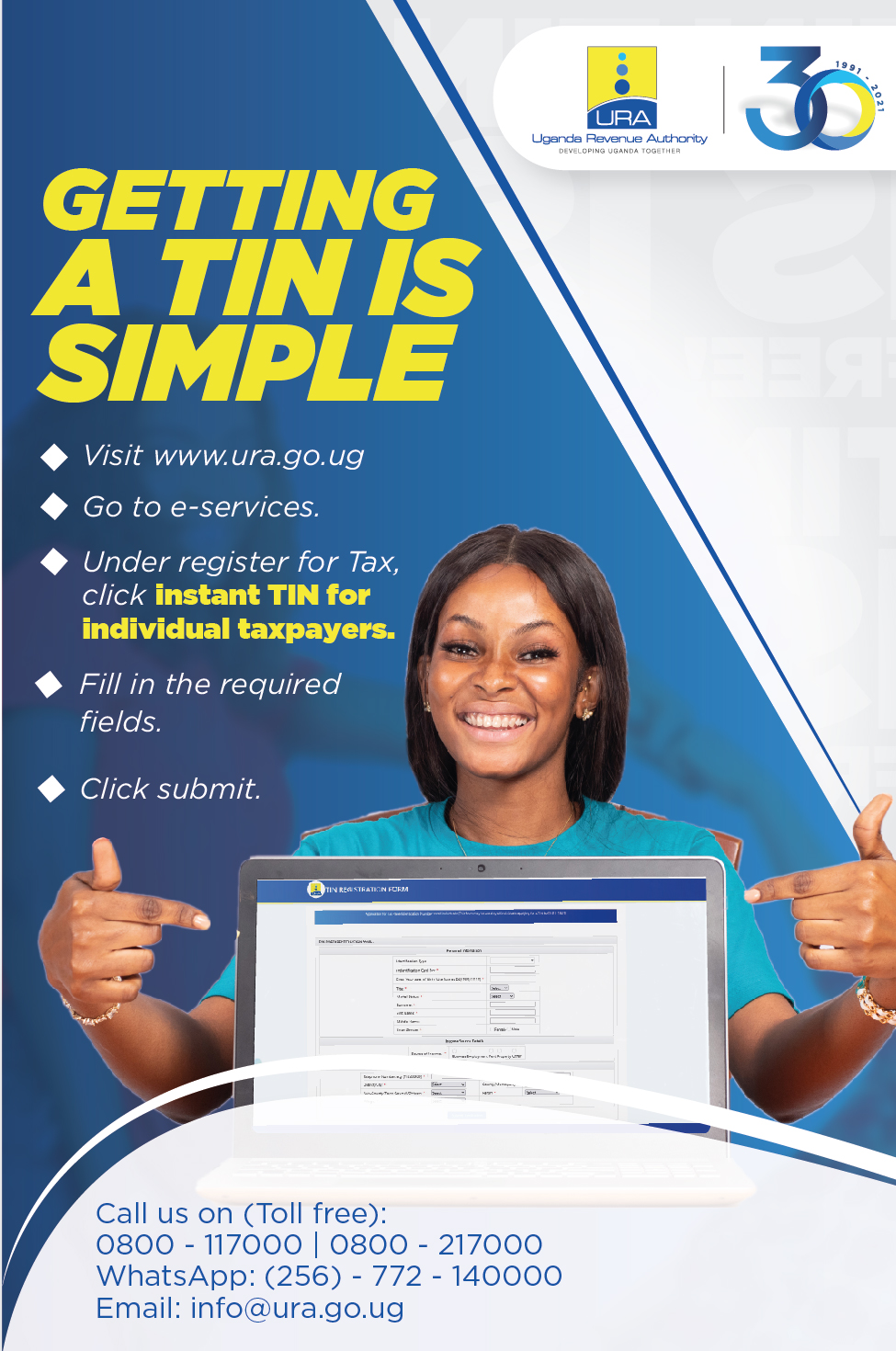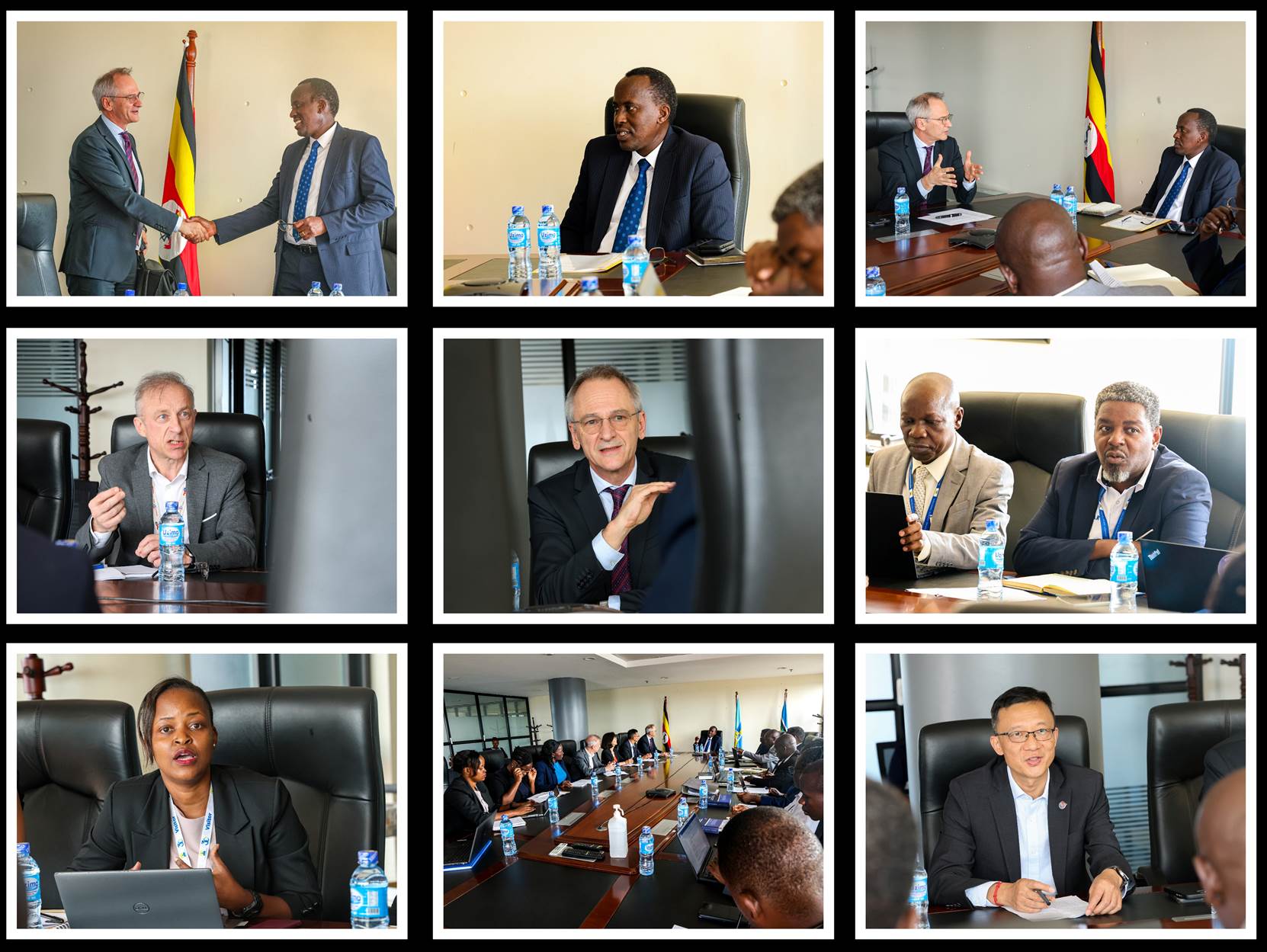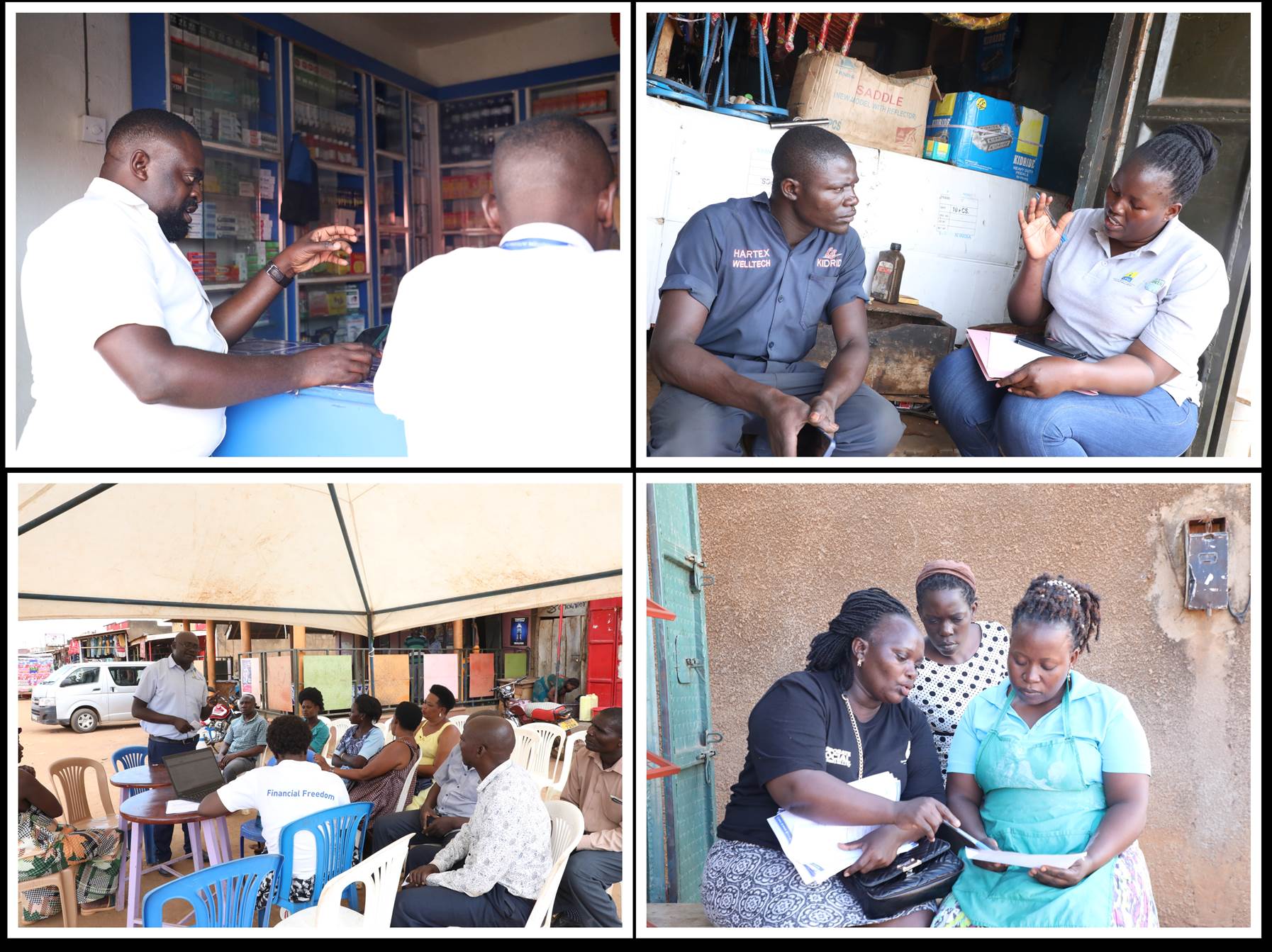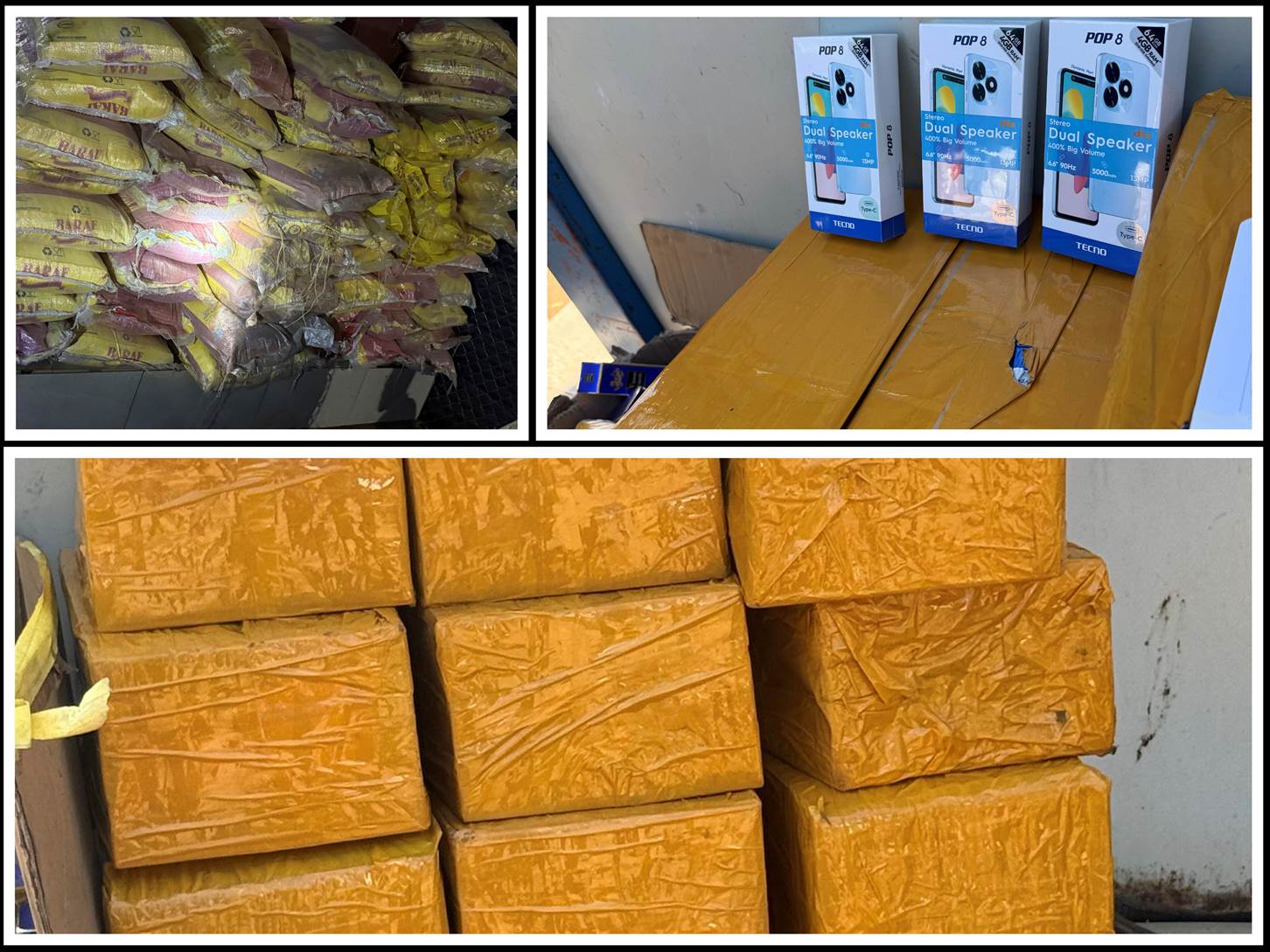Construction covers the processes involved in delivering buildings, infrastructure, industrial facilities and associated activities through to the end of their life. It typically starts with planning, financing, and design, and continues until the asset is built and ready for use; construction also covers repairs and maintenance work, any works to expand, extend and improve the asset, and its eventual demolition, dismantling or decommissioning.
Construction involves:
There are three sectors of construction: buildings, infrastructure and industrial:
• Building construction is divided into residential and non-residential.
• Infrastructure, also called heavy civil or heavy engineering, includes large public works, dams, bridges, highways, railways, water or wastewater and utility distribution.
• Industrial construction includes offshore construction (mainly of energy installations), mining and quarrying, refineries, chemical processing, power generation, mills and manufacturing plants.
Residential construction may be undertaken by individual land-owners (self-build), by specialist house-builders, by property developers, by general contractors, or by providers of public or social housing (e.g.: local authorities, housing associations).
Depending upon the type of building, non-residential building construction can be procured by a wide range of private and public organizations, including local authorities, educational and religious bodies, retailers, hoteliers, property developers, financial institutions and other private companies.
Civil engineering covers the design, construction, and maintenance of the physical and naturally built environment, including public works such as roads, bridges, canals, dams, tunnels, airports, water and sewerage systems, pipelines, and railways
Industrial construction includes offshore construction (mainly of energy installations: oil and gas platforms, wind power), mining and quarrying, refineries, breweries, distilleries and other processing plants, power stations, steel mills, warehouses and factories.
The legal requirements for the incorporation / registration / formation of a company in Uganda are contained in the Companies Act, 2012.
All businesses in Uganda are required to register with Uganda Registration Service Bureau (URSB) to formalize their legal status. The entity will receive either a Certificate of registration (if registered in your own names or business names) or Certificate of Incorporation if registered as a Limited liability Company.
The legal status is to be registered and cleared by different interest stakeholders below who have stake in the entity business.
Upon registration, construction companies are required to comply with the requirements of statutory bodies like;
• National Construction Authority (NCA)
• National Building Review board(NBRB)
At KCCA/LOCAL GOVERNMENT, upon approval of a Trading License application, you will be given a Trading License to enable you operate your business in a delineated Local Authority country wide.
A person liable to pay tax under a tax law shall apply to the Commissioner for registration with Uganda Revenue Authority (URA). On successful registration, the Commissioner shall issue to every applicant a Tax Identification Number (TIN).
A person’s TIN shall be indicated on any return, notice, communication, or other document furnished, lodged, or used for the purposes of a tax law.
A TIN is personal to the person to whom it has been issued and shall not be used by another person.
Note: A TIN is obtained free of charge and therefore no one should charge you for it.
Section 135(3) of the Income Tax Act (ITA), requires that every local authority, Government institution, or regulatory body shall require a Taxpayer Identification Number from any person applying for a license or any form of authorization necessary for purposes of conducting any business in Uganda.
TIN stands for Taxpayer’s Identification Number. A TIN is a 10-digit number which acts as an account of a taxpayer with Uganda Revenue Authority (URA). It shall be used for identification of each taxpayer, communication with URA and shall be used for all tax purposes under all tax laws.
A TIN can be acquired through any of the processes below:
- Through the URA Web portal
Visit the URA web portal https://ura.go.ug and select Register for taxes under e-Services. - Visiting a URA designated office
In case a taxpayer cannot register online, he or she can walk into any of the URA offices or One Stop Centre located in any of the Municipality or KCCA division and assistance shall be provided to complete the registration process. Ensure that you move along with the necessary attachments as listed above.
In case of failure to do any of the above, call the Contact Centre: 0800217000 or 0800117000 (Toll free) or send an email to services@ura.go.ug WhatsApp line: 0772140000
The key requirements for TIN registration include;
• For an individual: A National ID or any two of the following identification documents; Village ID, Employment ID, Passport, Driving Permit, Voter’s Card, Bank Statement, Work Permit, Financial Card, Visa, NSSF Card etc. This is also applicable to company directors.
• For a non-individual: Certificate of Incorporation/Certificate of Registration, Company Form 20 showing the directors of the company, and any other legal documents that confirms existence.
• For an individual with business, a business registration certificate is required.
• In case the directors do not have TIN’s, then their application(s) must be submitted together with the company application form under “group registration”.
• A valid email address and a mobile telephone number
• A referee – any person known to applicant and has a TIN
. An employee shall attach proof of employment
i. Acquiring a TIN enables you to:
Import or export goods within and outside Uganda.
Claim tax benefits that accrue to you e.g. tax refunds etc.
Access bank loans.
Acquire a trading license from Local Government / KCCA to undertake business in their jurisdiction.
Register your Motor Vehicle
Process land transactions 10 Million UGX and above.
The TIN acts as a security measure on transactions regarding some assets e.g. already validated motor vehicles, titled land since a notification is automatically sent to the owner’s TIN account and registered email.
NOTE:
A local authority, government institution or regulatory body shall not issue a license or any form of authorization necessary for purposes of conducting any business in Uganda to any person who does not have a Tax Identification Number including one issued by foreign tax authorities with whom Uganda has a tax treaty or agreement for the exchange of information.
URA in partnership with Uganda National Bureau of Standards (UNBS) introduced the Digital Tracking Solution (DTS) as a track & trace platform that sends production and importation data for specific products immediately, to both URA and UNBS.
The Digital Tracking Solution involves the stamping of products with a digital stamp. The digital stamps comprise of both;
a) Digital Tax Stamps – for tax purposes (URA) and;
b) Conformity Stamps – for safety standards certification (UNBS)
A Digital Tax Stamp is a marking that is applied to goods or their packaging and contains; se- crudity features and codes to prevent counterfeiting of goods and enable track and trace capa- abilities.
Note that
Cement is among the excisable goods affected by Digital Tax Stamps.
All cement whether locally manufactured or imported must bear digital stamps as a safety standards certification by UNBS. Therefore do not use Cement that does not bear digital stamps.
Book Keeping And Accounts For Tax Purposes
- It is very important for taxpayers to;
– Keep proper records of all business transactions in English language;
– Keep records such that it is easy to determine their tax liability;
– Keep records for five years after the end of the tax period to which they relate for future reference. - In case a record is necessary for a proceeding which started before the end of the 5 year period, a taxpayer shall keep the record until the end of the proceedings.
- The records kept should contain sufficient transaction information and should be saved in a format that is capable of being recovered and converted to a standard understandable record format.
- A taxpayer who wishes to keep records in a different language or currency shall apply in writing with clear reasons to the commissioner for permission.
- Where a record is not in English, the taxpayer will be required to meet the cost of translation into English by a translator approved by the Commissioner.
However, the taxpayer shall file a tax return or provide other correspondence with the Commissioner in English.
A person who no longer fulfills the registration conditions may, in the prescribed manner, apply to the Commissioner to be deregistered.
• The Commissioner shall by notice in writing, deregister a person if he is convinced that the person no longer satisfies the registration conditions
• A person who temporarily closes a business with an intention of resuming, shall not be
deregistered but apply to the commissioner in writing to have his TIN deactivated and later on reactivated when they resume business
The penalty for a person who fails to apply for registration, cancel a registration or notify the Commissioner of a change in registration or circumstances is;
i. a fine not exceeding Shs.3,000,000 or imprisonment not exceeding six years or both on conviction if the failure/act was done knowingly or recklessly.
ii. to a fine not exceeding Shs.1,000,000 or imprisonment not exceeding two years or both on conviction in any other case.
• The penalty to be paid under this section shall be recovered and collected as unpaid tax.
A TIN is personal to the person to whom it has been issued and shall not be used by another person.
• A person who uses a false TIN on a tax return or other document prescribed or used for the purposes of a tax law, knowingly or recklessly or not, commits an offence and is liable on conviction to a fine not exceeding Shs.3,000,000 or imprisonment not exceeding six years or both.
The penalty for knowingly or recklessly or not failing to maintain records as required under any tax law is a fine not exceeding Shs.2,000,000 or imprisonment not exceeding six years or both on conviction.
Note: A taxpayer, who cannot effectively handle his tax matters, can appoint a tax agent to transact with URA on his/her behalf.
A tax agent is a person licensed by the Tax Agents Registration Committee (TARC) to handle tax related issues on behalf of the taxpayer. An agent can be an individual, partnership, or company. An agent engages in the following activities on behalf of the taxpayer:
• Preparation, certification, and filing tax returns, or other statements or reports required by the Authority.
• Preparation of requests for ruling, petitions for reinvestigation, protests, objections, requests for refund or tax certificates, compromise settlements and/or reductions of tax liabilities and other official papers and correspondences with the Authority.
• Attending meetings and hearings on behalf of the taxpayer in all matters relating to a taxpayer rights, privileges or liabilities under the laws administered by the Authority
Taxpayers who need tax advisory services.
Any person dealing in the construction business is required to be registered for income tax. Income tax applies generally to all types of persons who derive income, whether an individual, non-individual or partnership.

Resident persons are taxed on worldwide income, while non-resident persons are taxed only on income derived from sources in Uganda
The taxpayer is required to make a self-assessment by calculating taxable income and then calculate the tax due on that income. The taxpayer’s calculations are reviewed by revenue officials when returns are filed to ensure that the declarations made are correct. The income tax rates apply differently to
A. Taxpayers with small businesses.
B. Non Individuals
C. Individuals
Note: In case of a long term contract, income and deductions are taken into account on the basis of the percentage of the contract completed during the year of income.
This is imposed on small taxpayers (both individuals and non-individuals) whose annual turnover is below UGX 150 million.
The presumptive tax rates are based on turnover, however there is a standard of record keeping. Small businesses with no records will pay tax on a fixed basis whereas those with records will pay tax as a percentage of turnover.
| Gross turnover per annum | With records | Without records |
| Not exceeding UGX 10 million | NIL | NIL |
| Not exceeding UGX 10 million | 0.4% of annual turnover in excess of 10 million | UGX 80,000 |
| Exceeding UGX 30 million but does not exceed UGX 50 million | UGX 80,000 plus 0.5% of annual turnover in excess of UGX 30 million | UGX 200,000 |
| Exceeding UGX 50 million but does not exceed UGX 80 million | UGX 180,000 plus 0.6% of annual turnover in excess of UGX 50 million | UGX 400,000 |
| Exceeding UGX 80 million but does not exceed UGX 150 million | 360,000 plus 0.7% of annual turnover in excess of UGX 80 million | UGX 900,000 |
Note: The presumptive process provides an option for the taxpayer to select the business location, type of business, and generate an assessment/Payment Registration Slip which also acts as the RETURN for that year of income.
The income tax rate for a company i.e. a body of persons, corporate or unincorporated, created or recognized under any law in Uganda or elsewhere, is 30% of the entity’s CHARGEABLE INCOME (gross income less tax allowable deductions).
| Production Costs | UGX | UGX |
| Opening stock | 30,000,000 | |
| Add purchases | 200,000,000 | |
| Less Closing stock | (50,000,000) | |
| Administrative expenses | 2,500,000 | |
| Cost of direct labor | 2,000,000 | |
| Direct expenses | 1,000,000 |
SOLUTION
| UGX | UGX | |
| Sales | 100,000,000 | |
| Add other income(e.g. commission) | 20,000,000 | |
| Total Sales | 120,000,000 | |
| Less costs: | ||
| Opening stock | 15,000,000 | |
| Add Purchases | 6,690,000 | |
| Less closing stock of finished goods | (5,000,000) | |
| Total cost of sales | (16,690,000) | |
| Gross profit | 103,310,000 | |
| Less Expenses | ||
| Administrative expenses | (1,200,000) | |
| Direct expenses | (15,000,000) | |
| Financial expenses | (2,600,000) | |
| Total | (18,800,000) | |
| Net profit for the year | 84,510,000 | |
| Tax 30%*84,510,000 | 25,353,000 |
NOTE; If a taxpayer incurs a loss, then tax payable would be zero.
The income tax rate for individuals depends on the income bracket in which the individual falls. Resident individuals enjoy a tax free annual income threshold of UGX. 2,820,000 per annum. The balance is taxed at 10%, 20% or 30% depending on the income bracket. Individuals who earn above UGX 120,000,000 per annum pay an additional 10% on the income above UGX 120 million.
| ANNUAL CHARGEABLE INCOME (CY) IN UGX | RATE OF TAX Residents |
| 0 to 2,820,000 | Nil |
| 2,820,000 to 4,020,000 | (CY – 2,820,000UGX) x 10% |
| 4,020,000 to 4,920,000 | (CY – 4,020,000UGX) x 20% + 120,000UGX |
| 4,920,000 to 120,000,000 | (CY – 4,920,000UGX) x 30% + 300,000UGX |
| Above 120,000,000 | [(CY – 4,920,000UGX) x 30% + 300,000UGX] + [(CY – 120,000,000UGX) x 10%] |
Income tax worked example for a resident individual in business.
Using the example of ABC Construction Limited above; assuming it is registered as an individual, and is a resident, the tax payable would be:
Answer
The chargeable Income UGX 84,510,000 falls in the bracket
(4,920,000 to 120,000,000 UGX)
Tax payable =UGX 24,459,000
Any person dealing in construction business and offers employment is required to be registered for Pay As You Earn (PAYE).
Employment refers to a;
• Position of an individual in employment of another Person,
• Directorship of a company, a position entitling the holder to a fixed or ascertainable remuneration.
• Holding or acting in a public office.
Employment income includes gross cash received in form of; salary, leave pay, payment in lieu of leave, overtime pay, fees, commission, gratuity, bonus, allowances (entertainment, duty, utility, welfare, housing, medical, sitting, transport or any other allowances).
Benefits in kind include use of employer office Motor vehicle for personal errands, free accommodation, use of driver, domestic workers and free utilities (power, water) paid by the employer on behalf of the employee. The benefits in kind are computed using particular formulae in the 3rd. Schedule of the Income Tax Act.
The PAYE is tax withheld from all employees earning a salary income above the stated threshold as per the Income Tax Act and filed by the employer to URA by the 15th of the following month.
Please Note
1) It is an obligation of the employer (not the employee) to deduct PAYE on a monthly basis and furnish the return by the 15th of the following month.
2) The amounts withheld should also be paid over to URA by the 15th of the following month to avoid interest charges.
The PAYE rates are applied based on the person’s resident status as shown in the table below.
| CHARGEABLE INCOME (CY) UGX (MONTHLY) | RATE OF TAX RESIDENTS |
| 0 to 235,000 | Nil |
| 235,000 to 335,000 | (CY – 235,000UGX) x 10% |
| 335,000 to 410,000 | (CY – 335,000UGX) x 20% + 10,000UGX |
| 410,000 to 10,000,000 | (CY – 410,000UGX) x 30% + 25,000UGX |
| Above 10,000,000 | [(CY – 410,000UGX) x 30% + 25,000UGX] +[(CY – 10,000,000UGX) x 10%] |
| CHARGEABLE INCOME (CY) UGX (MONTHLY) | RATE OF TAX |
| 0 to 335,000 | CY x 10% |
| 335,000 to 410,000 | CY – 335,000UGX) x 20% + 33,500UGX |
| 410,000 to 10,000,000 | (CY – 410,000UGX) x 30% + 48,500UGX |
| Above 10,000,000 | [(CY – 410,000UGX) x 30% + 48,500UGX] +[(CY – 10,000,000UGX) x 10%] |
- Kamonde is a resident employed by ABC construction ltd. He earns a monthly salary of UGX 200,000. Is the company obliged to deduct PAYE tax from Kamonde?
Solution; No, because Kamonde’s monthly salary is less than the threshold UGX 235,000 so his salary does not attract PAYE. - If Kamonde in addition to the monthly salary of UGX 200,000 is given travelling monthly allowance of UGX 95,000 and medical monthly allowance of UGX 55,000. Monthly allowance for accommodation UGX 150,000
Compute his monthly amount of PAYE to be deducted from Kamonde’?
Solution
Computation of Monthly Employment Income:
UGX
| Salary 200,000 Travelling allowance 95,000 Medical allowance 55,000 Accommodation allowance 150,000 Total {chargeable income} 500,000 |
{500,000 falls under the bracket (Exceeding Shs410,000 but not exceeding 10,000,000)}
Thus the PAYE applicable will be (30% of the amount by which chargeable income exceeds Shs.410,000 + 25000
Chargeable Income Less Balance 30Add % Add Tax there on in UGX | UGX 500,000 410,000 90,000 27,000 25,000 53,000 |
- Mr. Brown is a non-resident employed by ABC construction ltd. He earns a monthly salary of UGX15, 000,000. Compute his monthly amount of PAYE to be deducted?
Solution
15,000,000 falls under the bracket (Exceeding UGX 410,000) Thus PAYE
= (48,500 + 30% (15,000,000 – 410,000)) + 10% (15,000,000 – 10,000,000)
= UGX 4,925,500
WITHHOLDING TAX
Withholding tax (WHT) is income tax that is withheld at source by one person (withholding agent) upon making payment to another person (payee).
Withholding Agent
A withholding agent is a person legally obliged to withhold tax on payment. To become a withholding agent one must;
• Be on the list of selected / designated withholding agents published by the Minister of finance in a gazette or
• Be making a payment on a transaction that is required by law to be deducted from WHT.
Withholding taxes may be final or creditable
• Under the final withholding tax system, the amount of income tax withheld by the withholding agent is constituted as a full and final payment of the income tax due from the payee on the said income. The payee is not required to file an income tax return for the particular income that has faced final withholding tax.
• Under the creditable withholding tax system, taxes withheld on certain income payments are advance tax payments which are offset against a final tax liability in an assessment for a particular year of income. The payee required to file an income tax return to report the income and/or pay the difference between the tax withheld and the tax due on the income.
WHT should be considered when making the following payments:
i. Employment income: Tax is deducted by the employer from the employment income of every liable employee on a monthly basis under the PAYE system
ii. International payments: Tax is imposed on every non-resident person who derives any dividend, interest, royalty, natural resource payment or management charge from sources in Uganda. The tax is withheld by the payer at the rate of 15% on the gross amount before payment.
iii. Payments to non-resident Contractors or professionals: Tax is imposed on every non-resident person deriving income under a Ugandan source service contract. The tax is charged at 15% of the gross amount of payment and the person making the payment should withhold the relevant tax before effecting the payment.
iv. Payments on dividends: A resident company which pays a dividend to a resident shareholder is required to withhold tax at 15% of the gross amount of the dividend paid, except where the dividend income is exempt from tax in the hands of the shareholder. However, where the dividend is paid by a company listed on the stock exchange to a resident shareholder, the rate is 10% on the gross amount.
v. Payment for Goods and services: Any payment of amounts in total exceeding Shs. 1,000,000 to any person in Uganda for the supply of goods, materials of any kind or services, is required to withhold 6% of the gross amount. The threshold of Shs. 1,000,000 is in respect of the total contract value, implying that separate supplies which constitute one contract are subject to the 6% withholding tax regardless of the fact that the amount paid per a single supply or transaction is less than the threshold value.
vi. Payments to insurance agents: An insurance service provider who pays commission to an insurance agent is required to withhold 10% of the payment.
vii. Payments to advertising agents: A person who makes acommission payment to an advertising agent is required to withhold 10% of the gross amount of the payment.
Responsibility of Filing a WHT return and Payment of WHT
• The responsibility for payment of the tax rests primarily on the person making payment as a withholding agent. Thus, in case of his/her failure to withhold the tax or in case of under- withholding, the under-collected tax becomes due from the withholding agent.
• A WHT Agent is required to pay the tax withheld within 15 days after the end of the month in which the payment subject to withholding tax was made by the WHT Agent. . Note; this is not only for PAYE but also all other Withholding taxes.
Illustration
If Kato a resident individual supplies Cement worth 100 million UGX to ABC construction Ltd, he will receive a net of 94 million UGX and the 6 million UGX (6% of 100 million UGX) will be Withheld and remitted to URA by ABC ltd on his behalf. Note that the 6million UGX withheld forms part of Kato’s annual Tax liability and thus will reduce his Tax liability for the year.
VAT is a consumption tax charged at a rate of 18% on all supplies made by taxable persons i.e. persons registered or required to register for VAT purposes. The threshold for VAT registration is an annual turnover of over 150 million, or 37.5 million in the first 3 consecutive months.
Voluntary Registration
The Commissioner General shall register a person who applies for registration under Section 7 and issue to that person a certificate of registration including the VAT registration number (TIN) unless the Commissioner General is satisfied that ;
(a) the person has no fixed place of abode or business; or
(b) the Commissioner General has reasonable grounds to believe that that person :–
• will not keep proper accounting records relating to any business activity carried on by that person
• will not submit regular and reliable tax returns as required by Section 31; or
• is not a fit and proper person to be registered
Some transactions are beyond the scope of VAT and these are classified as Exempt supplies. Supplies on which VAT is charged at 0% are classified as zero-rated supplies.
Note:
Important:
Issuance Of E-Invoices Or E-Receipts By All Vat Registered Taxpayers
It is mandatory for all VAT registered taxpayers to issue e-invoices or e-receipts as no tax credit is allowed or claimable on purchases unless they are supported by e-invoices or e-receipts.
The law allows a period of six (6) months from the date of issue of the invoice within which a person can apply for an input tax credit.
This is a tax that is imposed on specified imported or locally manufactured goods, and services. Initially Excise Duty was meant for “luxury” or prohibited items. However excise duty is now treated as any other source of revenue for Government. The applicable rates may be specific or ad valorem.
The tax is imposed on the value of the import; and in the case of locally manufactured goods, the duty (local excise duty) is payable on the ex-factory price of the manufactured goods.
Note
Excise duty is charged on deliveries (Goods and services) made out of the factory as well as on payment regardless of whether payment is made or not.
These are taxes which are charged on all goods entering into or leaving our country. The taxes charged depend on the Value and nature of the item imported.
Below are the Steps we follow when computing customs duties
• Step 1 Determine Customs Value (CV);
• Step 2 Convert the Customs Value to Local Currency (UGX);
• Step 3 Classify the item (HSC) as per the common external tariff;
• Step 4 Determine taxes collectable
• Step 5 Apply the duty rates on the Customs Value
IMPORT DUTYThis is a tax collected on imports and some exports not listed in the exemption schedule by URA. It is based on the customs value of the goods that are imported. The customs value is Cost, Freight and Insurance up to Mombasa or cost and insurance if by Air. The rate of import duty is either 0%, 10%, 25% or more for sensitive items like wheat and powdered milk.
NB. For more information on import duty rates, please refer to our common external tariff book on the portal under tax assistant, A-Z tax topics.
Formulae for calculating import duty
Import Duty (ID)
= ID rate x Customs value
VAT
= VAT value x 18%
= (ID+EXD+CV) x 18%
Where;
ID = Import duty EXD = Excise duty CV = Customs value
c) Excise duty at Importation
This tax is only charged on specific goods imported at varying rates.
Formulae for calculating excise duty
Excise duty (EXD)
= EXD value x EXD rate
= (ID + Customs value ) x EXD rate
d) VAT at importation
This is a tax on consumption charged on taxable goods imported into the country and is charged at a rate of 18% if the importer is registered for VAT and at 15% on the 18% of the value if the importer is not registered for VAT but importing taxable goods of a value of UGX 4,000,000 and above.
NB. If the importer is registered for VAT, he/she can claim any VAT incurred at importation through her/his monthly VAT returns.
Formulae for calculating VAT at importation
VAT = VAT value x 18%
= (ID+EXD+CV) x 18%
Domestic VAT
= 15% (VAT value x 18%)
15
= 15% ((ID+EXD+CV) x 18%)
e) Withholding Tax (WHT) at importation
This is income tax withheld at importation of a good. It is at a rate of 6% of customs value. It can be claimed by the importer when he/she is filing his/her final income tax return as advanced tax already paid.
NB. If the importer is exempted from WHT, he/she should not be charged this tax at importation Formulae for calculating WHT at importation
WHT = Customs value x 6%
f) Infrastructural levy
This levy is only applicable to dutiable items imported from outside EAC Region.
NB: The following will not attract the 1.5% Infrastructure Levy
- Items that are at 0% Import duty rate
- All items imported under conditional Exemptions as indicated in the 5th Schedule of the EACCMA (East African Community Customs Management Act)
Formulae for calculating infrastructural levy
IL = Customs value x 1.5%
Where; IL= Infrastructural levy
g) Environmental levy
This is tax levied on imports that may be harmful to the environment for example on used clothes and used vehicle.
Formulae for calculating infrastructural levy
EL on used clothes = Customs value x 10%
EL on used vehicles of YOM between 5 and 10years = Customs value x 35% EL on used vehicles of YOM 10years and above = Customs value x 50%
Where; EL= Environmental levy
Treatment Of Charges Imposed By Local Authorities Under Income Tax. How Are The Local Authority Charges Treated For Income Tax Purposes?
All charges imposed by local authorities (ground rent, environmental tax, and license operating fees) are allowed as a deduction in the income statement.
| INCOME TAX | |||
| Beneficiary | Incentives | Period of Incentive | Conditions for the Tax Incentive |
| Developer of an industrial park/free zone | Exemption of income derived from renting out or leasing facilities established in an industrial park or free zone. | 10 years | Must invest a minimum of USD 50m for foreign investors or USD 10m for EAC citizens, Incentive takes effect from the date of commencement of construction. Also applies to an existing investor making an additional investment of the same value. |
| Must invest a minimum of USD 50m for foreign investors or USD 10m for EAC citizens, Incentive takes effect from the date of commencement of construction. Also applies to an existing investor making an additional investment of the same value. | Must invest a minimum of USD 50m for foreign investors or USD 10m for EAC citizens, Incentive takes effect from the date of commencement of construction. Also applies to an existing investor making an additional investment of the same value. | Indefinite | Must be licensed to operate as a collective investment scheme. Participants in the scheme should not have day to day control over the management of the property. Participants contributions and ultimate income/ profits must be pooled Property must be managed as a whole by the operator of the scheme |
| Aircraft Operators | Income Tax exemption for Aircraft Operators | Indefinite | Applies to persons engaged in air transport for domestic and international traffic or aircraft leasing. |
| . Private employers of persons with disabilities (PWDs) | Deduction of 2% Income tax for employers that employ PWDs | Indefinite | 5% of employees must be PWDs |
| Non-profit making Organizations | Income tax exemption | Indefinite | Where the Commissioner has issued a written ruling stating that it is exempt |
| Compliant taxpayers | 6% WHT exemption | 12 months renewable | Where the Commissioner is satisfied that the taxpayer has regularly complied with the obligations under the tax laws |
| All taxpayers | 100% deduction of Scientific research expenditure | Indefinite | A person who incurs expenditure for scientific research |
| All taxpayers | 100% deduction of training expenditure | Indefinite | Employers who train permanent residents or provide tertiary education not exceeding in the aggregate 5 years |
| All taxpayers | Initial allowance and Depreciation allowance: Initial Allowance – capital deduction of 50% of qualifying Plant & machinery and 20% on Industrial building placed in the radius of 50Km outside the boundaries of Kampala. Person who places depreciable assets in service e.g. computers, automobiles, specialized trucks, tractors, plant and machinery used in farming, manufacturing or mining operations, trailers and trailer mounted containers; and Industrial building deduction of 5% on cost of construction straight line method for 20 years. | Indefinite | All taxpayers with depreciable assets |
| All taxpayers | Carry forward losses: Assessed loss is carried forward as a deduction in the following year of income. | Duration of the loss | All taxpayers |
| Investor established in a country with which Uganda has a DTA | Double Taxation Agreements (DTA): Investors from countries with active DTA’s with Uganda i.e. United Kingdom, Denmark, Norway, South Africa, India, Italy, Netherlands and Mauritius. Withholding tax rates applicable to dividends, interests, management fees and royalties are 10 | Duration of the DTA | Beneficial owner of investment as defined in the Income Tax Act established with economic substance in a country with which Uganda has a DTA. |
| VAT ACT | |||
| Beneficiary | Incentives | Period of Incentive | Tax incentive |
| . Developer of an industrial park or free zone | No VAT on any payment for feasibility studies, design construction services, construction materials and earth moving equipment and machinery. | Duration of the development | The investment must be at least USD 50m. The development must be for an industrial park or free zone. |
| . Supply of feasibility study or to undertake design and construction | No VAT on the supply of feasibility study or to undertake design and construction | Indefinite | Must invest a minimum of USD 30m for foreign investors and USD 5 m for a local investor. In case of any other manufacturer from the date on which the manufacturer makes an additional investment equivalent to USD 30 m for a foreign investor or USD 5 m for a local investor. The investor must use at least 70% of locally sourced raw materials subject to their availability, capacity to employ at least 70% EAC citizens who must take up at least 70% of the wage bill. |
| Developer of a hotel or tourism facility | No VAT on the supply of feasibility study, design and construction services; or on the supply of locally produced materials | Duration of the development | The investor must invest at least USD 8m. The feasibility studies must be for the development of a hotel or tourism facility or the supply of machinery and equipment furnishings or fittings (not available on the market). The hotel or tourism facility must have a room capacity exceeding 100 guests. |
| Developer of an industrial park/ free zone | No Stamp duty on debentures, lease of land, Increase of share capital, transfer of land. | Duration of development | Must invest a minimum of USD 50m and incentive takes effect from the date of commencement of construction. |
| Hotel or tourism developer | Nil Stamp Duty on debenture, further charge, lease of land, increase of share capital, transfer of land and agreement to provide services on conducting a feasibility study or developing a design for construction. | Duration of the development | Must invest at least USD 8m. Hotel or tourism facility should have room capacity exceeding one hundred guests. |
| Hospital facility developer | Nil Stamp Duty on debenture, further charge, lease of land, increase of share capital, transfer of land and agreement to provide services on conducting a feasibility study or developing a design for construction. | Duration of the development | a. Must invest at least USD 5m. b. Develop a hospital at the level of a national referral hospital with capacity to provide specialized medical care |
INCENTIVES APPLICABLE TO THE CONSTRUCTION SECTOR.
General Tax Incentives to the Sector(EXCISE DUTY ACT)
| Beneficiary | Incentives | Period of incentive | Tax incentive |
| Developer of a hospital facility | No VAT on supply of feasibility study, design and construction services; or the supply of locally produced materials; or the supply of machinery and | Duration of the development | Must invest at least USD 5 million. The feasibility study must be for the development of a hospital facility; or the construction of hospital premises and |
| Industrial parks or free zones developer | Nil duty on construction materials for development of industrial parks or free zones by a developer | Duration of development | Must invest a minimum of USD 50m for foreign investors & USD 10m for EAC citizens. The incentive takes effect from the date of Commencement of construction. |
| equipment or furnishings and fittings | other infrastructure; or supply of the machinery, equipment, furnishings and fittings for use in the hospital facility. The investment must be for a hospital at the level of a national referral hospital with capacity to provide specialized medical care. | ||
| VAT Registered taxpayers | VAT registered persons claim all the VAT incurred | Indefinite | Turnover of UGX 150m in any 12-month period for first time registration, ability to keep proper books of accounts and making Taxable supplies. |
| Contractors to licensees undertaking mining/ petroleum operations | Deemed VAT: Tax payable on supply by a contractor to a licensee undertaking mining or petroleum operations is deemed to have been paid by the licensee to the contractor provided the supply is for use by the licensee solely and exclusively for mining or petroleum operations | Duration of the project | Contractors executing aid-funded projects |
| Contractors executing aid- funded projects | Deemed VAT: Tax payable on supply by a contractor to a licensee undertaking mining or petroleum operations is deemed to have been paid by the licensee to the contractor provided the supply is for use by the licensee solely and exclusively for mining or petroleum operations | Duration of the project | Contractors to licensees undertaking mining/ petroleum operations |
| CONSTRUCTION SECTOR | ||
| Item | Item Description | Tax incentive |
 | Specialized vehicles • Concrete Mixers – Self propelled • Concrete Pumps | • The equipment is free of import duty by tariff. • VAT is deferrable for VAT registered companies |
 | Earth Moving Machinery • Excavators • Bull dozers • Angle Dozers | • The equipment is free of import duty by tariff. • VAT is deferrable for VAT Registered Companies |
 | Cranes for Construction | • The equipment is free of import duty by tariff. • VAT is deferrable for VAT • Registered Companies |
 | Scaffolding | • When obtained from the region of East Africa, they shall be exempted from import duty. |
 | Surveying Equipment •Global Positioning Systems (GPS) • Theodolites • Line of site equipment • Rangefinders They are largely used by road construction firms, surveyors, oil exploration, mining. | • The equipment is free of import duty by tariff. • VAT is payable |
 | Goods Carrying vehicles – Tippers • Gross Vehicle Weight • exceeding 5 tonnes but not exceeding 20 tonnes. • Gross Vehicle Weight exceeding 20 tonnes. | • Goods carrying vehicle with gross weight exceeding 5 tonnes but not exceeding 20 tonnes import duty is 10% for one year • Goods carrying vehicle with gross weight 20 tonnes and more is free of import duty for one year |
 | Temporary imports of Construction Machinery of a specialized nature for use in the construction sector that is not listed above. Terms and conditions as specified in the East African Community- Customs Management Act, 2004 apply. | • Taxes suspended and goods secured on bond that is cancelled upon re export. |
 | Pipe line construction of oil and gas from Uganda to Dar- Es -Salaam | • Inputs for use in the construction of the oil and gas pipeline are exempted from all taxes under the fifth schedule of the East African Community Customs Management Act, 2004. |
 | Hydro power construction equipment and inputs. | • The supplies for the use in hydropower project are exempted from VAT. |
 | Regional Economic Communities (RECs) that include East African Community (EAC), Common Market for East and Central Africa (COMESA). Soon entering the TRIPARTITE that will include EAC, COMESA and SADC (South African Development Co- operation) | •Imports from the Regional Economic Communities are given preferential import duty treatment. |
 | The country has industries for local inputs that are of high quality and manufactured in Uganda. These items when procured locally attract only local taxes | • Industries that produce items such as cables, cement, iron bars, pipes, nails, roofing sheets etc. |
 | Upcoming projects such as Standard Gauge Railway (SGR) are offering opportunities in construction sector. | The project if funded by donors shall have its inputs exempted from taxes under the East African Community Customs Management Act, 2004. |
 | Pre-fabricated buildings for factory use imported by registered manufacturers or other entities such as warehouse construction | VAT Deferrable for pre- fabricated buildings for factory use |
 | The supply of earth moving equipment and machinery for development of an industrial park or free zone to a developer of an industrial park or free zone whose investment is at least fifty million United States Dollars | VAT is applicable at 0% under the VAT Act. |
 | The supply of construction materials for development of an industrial park or free zone to a developer of an industrial park or free zone whose investment is at least fifty million United States Dollars | VAT exempt under the VAT Act Excise duty nil |

ANNUAL RETURNS | ||
| Tax Type | Provisional return due date | Final Return Due date |
| • Corporate income tax • Rental Income tax- Non individual | The last day of the 6th month after the start of the year of Income | The last day of the 6th month after the end of the year of Income. |
| • Presumptive/Small business income tax | – | The last day of the 6th month after the end of the year of Income. |
| Trust Income tax(Chargeable in the hands of beneficiary) | The last day of the 3rd month after the start of the year of Income. | The last day of the 6th month after the end of the year of Income. |
| Trust Income tax(Chargeable in the hands other than beneficiary) | The last day of the 6th month after the start of the year of Income. | The last day of the 6th month after the end of the year of Income. |
| Partnership Income tax | – | The last day of the 6th month after the end of the year of Income. |
| MONTHLY RETURNS | ||
| • With Holding Tax • PAYE • Excise Duty(Goods & Services) | – | By the 15th day of the following month |
The law provides for a separate quarterly return for non-resident suppliers of services deemed to be supplied in Uganda when made to non-taxable persons.
A taxable person who is providing services to a non-taxable person in Uganda and is engaged in providing services in connection to.
• Immovable property in Uganda;
• Radio or television broadcasting services received at an address in Uganda;
• Electronic Services delivered to a person in Uganda;
• Transfer, assignment, or grant of a right to use a copyright, patent, trademark, or similar right in Uganda;
• Telecommunication services other than those by a supplier of telecommunication services or services to a person who is roaming while temporarily in Uganda
These shall be required to file returns within 15 days after the end of the three consecutive calendar months.
Advance return
Advance Income Tax return is a return of income submitted by a taxpayer before the end of a given year of Income.
Instances when an advance Return is required.
i. Before the end of the period for which it is due
ii. At any time of any year of income, where a taxpayer has died, is bankrupt, wound up, gone into liquidation, is about to leave Uganda permanently or any other reason where the Commissioner considers appropriate that such a taxpayer may be required to file an advance return by a specified date.
Where an Advance Return is not furnished by the due date, an Advance Assessment is issued.
Note:
A notice requesting for such a return shall be in writing specifying the due date for filing the return.
If a person is not able to file a return, he can apply for an extension to file his return providing reasons justifying the extension.
The extension if granted will not exceed 90 days and does not change the due date for payment of the tax due. Interest will therefore accrue on any outstanding tax liability.
However multiple extensions can be applied for provided the number of days does not exceed 90 days.
Note: If the taxpayer is dissatisfied with the Commissioner’s decision about the extension, he may challenge it under the objection and appeals procedure.
Offences and penalties on returns
The penalty for failure to furnish a tax return by the due date or within a further time allowed by the Commissioner to a fine not exceeding Shs.1,000,000 and failure to furnish the return within the time prescribed by court to a fine not exceeding Shs. 2,000,000 on conviction.
If you understate provisional chargeable income by more than 10% of the actual chargeable income, the penalty is 20% of the difference in tax on your estimated income and 90% of the actual chargeable income.
Penalty = 20% (Tax on Estimated chargeable Income-Tax on 90% of actual Changeable income) Providing False statements
The penalty for knowingly or recklessly making false or misleading statements or omitting from a statement to a tax officer, a matter or thing is a fine not exceeding two hundred currency points that is Shs. 4,000,000 or imprisonment not exceeding ten years or both on conviction.
He will receive an assessment from the URA officer.
An assessment is a document/ form showing the estimated taxable income of a person and the tax payable on it including any penalty
This is a tax assessment made to a person based on estimated taxable income of that person. It is generated and issued by the Commissioner due to failure by the taxpayer to furnish a self- assessment return for any given tax period.
Is a declaration issued if the Commissioner is satisfied that there is a risk that a taxpayer may delay, obstruct, prevent, or render ineffective payment or collection of tax that has not yet become due.
It may be made before the date on which the taxpayer’s tax return for the period is due.
It can be issued if a taxpayer defaults in submitting an advance return when requested by the Commissioner. However the Commissioner can also issue this assessment without notice.
This assessment can be objected to and can also be amended.
Where the taxpayer files a returns for a given period on which a Default or Advance assessments was issued, the taxpayer’s return for that period shall be accepted and takes precedence over the default assessment.
Taxpayer is allowed to submit his/her return together with the objection.
This is an amendment of an original tax assessment issued by the commissioner for any tax period to ensure that correct tax liability is obtained.
It is made at any time where fraud or any gross or wilful neglect has been committed by, or on behalf of the taxpayer or new information has been discovered in relation to the tax payable for a tax period.
A taxpayer may amend the tax return on condition the return is not under investigation and amendment is done within 3 years from the date on which the original return was lodged by the taxpayer.
HOW DOES ONE REGISTER A PAYMENT?
To register a tax payment, Visit the web portal (ura.go.ug) Click on eservices, select Payment Registration under payments.
Select the tax head, go to details of Tax Type, select the tax head from the drop down and input the tax amount.
Fill in the details of the Taxpayer and bank mode of payment (VISA, MasterCard, American Express, Union Pay, Mobile Money, EFT, RTGS and Swift, Cash, Cheque, Demand draft, or Point of Sale), enter the given image and click Accept and Register.
Print out the Payment Registration Slip that appears on submission and take the form to the bank to effect payment.
Payment for any tax type can be done using;
VISA, MasterCard, American Express, Union Pay, Mobile Money, EFT, RTGS and Swift, Cash, Cheque, Demand draft, Point of Sale.
All taxpayers are required to pay the tax liable by the due date.
Any unpaid tax shall be collected by the Commissioner through serving a notice of demand on the person liable.
The taxpayer will be given at least 28 days from the date of service of the notice within which they can pay any outstanding amount specified in the demand notice.
Failure to pay attracts interest at a rate of 2%.per month the tax is not paid.
If a taxpayer has any outstanding liability and pays any amount, the payment will be allocated in the order of PPI (Principal tax liability, penal tax and Interest due).
If a taxpayer has more than one tax liability at the time a payment is made, the amount will be used to clear the oldest / earliest liability first in the same order as above (PPI).
A taxpayer can apply in writing to the Commissioner for an extension to pay tax at a later date.
The date of payment can be extended but the payment due date is maintained. Interest shall accrue from the due date of the payment.
WHAT HAPPENS TO A TAXPAYER WHO HAS BEEN ASSESSED AND IS DISSATISFIED?
The taxpayer has an option and a right to object to the decision against her/him.
An objection is communication from a taxpayer to the Commissioner expressing dissatisfaction with either an assessment raised on him/her or any other tax decision made by the Commissioner.
This is always presented in the format prescribed by the Commissioner.
OBJECTION TIMELINES
• A person who is dissatisfied with any tax decision may lodge an objection with the Commissioner within 45 days after receiving notice of the tax decision.
• A person may apply in writing to the Commissioner for an extension of time to lodge an objection and wait for the Commissioner’s decision.
• The Commissioner will serve a notice of an objection decision to the person objecting within 90 days from the date of receipt of the objection.
• In case an objection decision has not been served within 90 days, the person objecting may, by notice in writing to the Commissioner, consider the Commissioner as having allowed his objection decision. This is called “electing”
• The time limit for making an objection decision is waived in case a review of a taxpayer’s records is necessary for settlement of the objection and the taxpayer is notified.
• A person dissatisfied with an objection decision may;
a) Apply to the Commissioner to resolve the dispute using alternative dispute resolution procedures. This may present other avenues for taxpayers who would like to review tax decisions issued by URA without necessarily lodging an appeal to the Tax Appeals Tribunal.
b) Lodge an application to the Tax Appeals Tribunal (TAT) for review of the objection decision.
• A person dissatisfied with a decision of the Tribunal may, within 30 days after being served with a notice of the decision, lodge an application with the High Court for review of the decision.
• A person dissatisfied with a decision of the High Court, arising from appeals to the TAT, may, within 30 days after being served with a notice of the decision or within further time as the Court of Appeal may allow, lodge an application with the Court of Appeal for review of the decision. This appeal will be on questions of law only.
• The Court of appeal shall inquire and determine the appeal expeditiously and shall declare its findings not later than 60 days from the date of filing the appeal.
• An appeal to the Supreme Court may be lodged with a certificate of the court of appeal that the matter raises questions of law of great public importance or if the Supreme Court in its overall duty to see that justice is done, considers that the appeal should be heard.
• The Supreme Court shall inquire and determine the appeal expeditiously and shall declare its findings not later than 30 days from the date of filing the appeal.”
• Where the decision maker is required to refund an amount of tax to a person as a result of a decision of a reviewing body, the tax shall be repaid with interest at the rate specified in the relevant law on the amount of the refund for the period commencing from the date the person paid the tax refunded and ending on the last day of the month in which the refund is made.
Reviewing body means the Tribunal, the High Court, the Court of Appeal and the Supreme Court
In any objection proceeding;
a. It is upon the tax payer to prove that the assessment is incorrect. OR
b. In case of a decision made to prove that the decision should not have been made or should have been made differently.
COLLECTION OF TAX FROM PERSONS LEAVING UGANDA PERMANENTLY
The Commissioner may issue a certificate containing particulars of the tax payable to the officer responsible for immigration control and request the Commissioner for Immigration to prevent that person from leaving Uganda until that person;
(a) Makes payment of the tax in full; or
(b) Executes a financial bond guaranteeing payment of the tax liability.
When a person refuses or fails to comply with payment of taxes as and when required, the commissioner may collect the outstanding tax using various methods, such as:
• By Distress: Goods on which the assessed person has a claim are sold in order to recover tax.
• By Agency Notice: Any other person who has money or other liabilities of the person to whom tax is assessed and being demanded from , is required to pay the amount held directly to URA.
• Temporary closure of business premises.
• Charge over immovable property: The Commissioner writes to the Registrar of Titles, directing the Registrar to the effect that the land or buildings in the notice are a subject of a security for unpaid tax.
• Seizure of goods in cases where there is proof that the taxes due have not been paid especially in respect of the supply, removal or import of the goods.
Note:
If there is reason to believe that;
(a) A taxpayer establishing a business in Uganda intends to carry on the business for a limited time only; or
(b) A taxpayer may not pay tax when it becomes payable.
The Commissioner may write to a taxpayer to give security by bond, deposit, or anything else that is satisfactory to the Commissioner for the payment of tax that may become payable.
The Commissioner is entitled to have at all times and without prior notice, full and free access to;
(i) Any premises or place;
(ii) Any record, including a record in electronic format; or
(iii) Any data storage device
Make an extract or copy, seize any record, data storage device that may contain data relevant to a tax obligation; and retain any record or data storage device seized for as long as it is required for determining a taxpayer’s tax obligation and liability, including any proceedings.
The Commissioner may, request any person;
(a) To furnish, any information or
(b) To attend and be examined at the time and place designated for that purpose concerning the tax affairs of that person or any other person, and for that purpose the Commissioner may require the person to produce any record, including an electronic format, in the control of the person.
• A tax payer providing a passenger transport service; or a freight transport service with a goods vehicle with a capacity of two tonnes or more.
• A tax payer providing ware housing or clearing and forwarding services.
• A taxpayer supplying goods or services to the Government.
• Failure to furnish a return or any other document
• Failure to comply with an agency notice or the requirements of a receiver
• Failure to maintain proper records
• Failure, without good cause, to comply with a request for information
• Improper use of a taxpayer identification number
• Making false or misleading statements
• Obstructing an officer
• Aiding and abetting another person to commit an offence.
• Offering bribes to officers
i. For Associations, mobilize your members and invite URA to sensitize them.
ii. For Tax payers in the construction sector
• Register for taxes
• Periodically assess yourselves by filing returns and Pay liabilities due (or claim refunds) by the due dates to avoid any penalties and interest that may accrue due to non-compliance
• Always attend URA Tax clinics whenever called upon
• Engage URA as much as possible to avoid being misled about taxes
• One of URA’s focus areas this Financial Year is going to be the construction sector thus we urge traders to fully participate and attend URA Tax Clinics and Workshops when called upon
Taxpayer Registration Expansion Program is being implemented to ease the registration process and compliance process.
i. THE TAX PROCEDURES CODE ACT, 2014.
ii. THE INCOME TAX ACT (IT A), CAP.340
iii. THE VALUE ADDED TAX ACT (VAT A), CAP.349
iv. THE EXCISE DUTY ACT,2014
v. THE EAST AFRICAN COMMUNITY CUSTOMS MANAGEMENT
This Information is strictly for purposes of guidance to our clientele and is subject
To change on amendment of tax legislations & any other regulations that govern tax administration.
Email:info@ura.go.ug; services@ura.go.ug | https://ura.go.ug Twitter@URAuganda| Facebook@URApage
URA TOLL FREE HELPLINE: 0800 117 000 | WhatsApp 0772 140000











